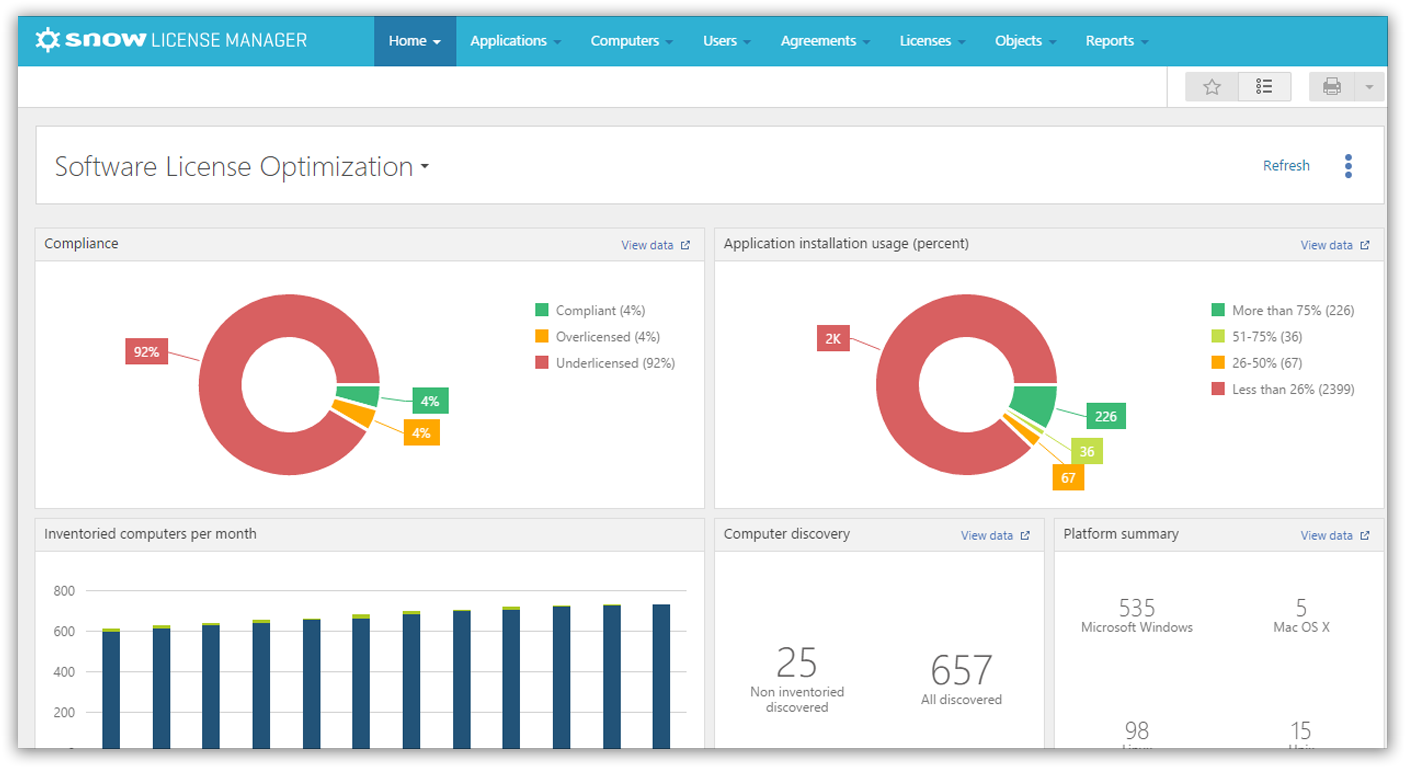Open source license managers can be a big help for many organizations, including startups, because it makes licenses easy to manage and lets you innovate quickly. However, there are risks to consider, such as complying with open source license terms. This is why it’s important to use the right open source license manager and do your research.
You want to ensure compliance and security, and full integration into your organization’s build, programming tools, and development environment.
How to pick a Free License Management Software?
Today, there are many available open source license managers that can be downloaded and implemented instantly. However, not all of them give you a full license management solution, nor offer your complete security or give you increased productivity. That’s why it’s important to look out for a good open source license management solution that will deliver on your requirements and cope with your day-to-day activity.
It’s important to find software that helps you with tracking and identifying your in-house open source licenses, secure software use in-house and monitor your open source software components.
Basic requirements
There are several key principles for any open source license manager, and it’s important that the solution you select has such principles in place.
Many users often consider open source license managers as a part of continuous integration and build systems, but you must also consider the overall document management strategy. Many organizations do not have a comprehensive document management strategy, which is not an option if your organization is exposed to legal problems.
At the core of any open source license manager, you should find the following features:
- Full query, reporting, and automation support through one solution.
- A way to capture and extract license information.
- Programmatic access to reported data.
- A way to build in-house, private database and API.
- A way to integrate reports and data with development tools.
- Support of standards, such as the Open Contracting Data Standard data model.
- Device- and vendor-independence.
- Support for common open source licenses.
- User registration.
Product selection
It’s easy to choose any open source license manager, but it’s not enough. You should pay attention to the license, licensing model and the pricing model as these factors affect your future work with the solution.
License model
You should pay attention to the license model of the open source license management solution. Look carefully at what kind of open source licenses it supports and if it supports them in a correct way. This will allow you to comply with license obligations and, if you’re a developer, to feel free to use open source software that you may already have.
Today, there are many different open source licenses. Some are very generalized, but some of them are very specific, so if you want to have the right open source license manager, you have to look for software that can provide you support for any license under the sun.
Pricing model
You should also pay attention to the pricing model. It’s important to evaluate how your software cost will change due to new upgrade versions. For example, if you have a version fee, your price will increase with every upgrade.
You should also look for open source license management systems that offer discounts for long-term updates.
Upgrades
Software updates are a critical part of choosing an open source license manager. After all, you have to know that your system is being updated regularly. Any open source license manager should give you access to upgrades, price discounts, and technical support packages.
It’s important to find open source license management systems that help you customize your project and give you the support you need for your project.
Foundation
Not all open source license management systems share the same set of features, so it’s important to analyze all of them carefully. If you want to have additional features and capabilities for your license management, you can always add them to your solution.
Integration with IDEs
A good open source license management system must be able to integrate with IDEs and other development tools.
Some of the most advanced features are:
- Helps you integrate your build, programming tools, and development environment.
- Connect to your environment, such as your version-control system and license file.
- Interact with other development tools that you may be already using, which can ensure compliance and security.
- Extend capabilities with additional modules.
Sample software
Choosing the right open source license management system is an important step. Not every system will fit your needs, and you will most likely find yourself changing your mind several times. When you’re doing research online, you will most likely find many open source license managers that do not fit your needs.
Benefits of License Management Software
- The ability to track and identify all in-house open source license versions and components, as well as license reports.
- Improved version management, as you can ensure the origin of a particular file.
- Make compliance easy by setting up your open source license manager.
- Have access to data, reports, and reports about the licensing and legal compliance of your organization.
- Easy to integrate in your build, programming tools, and development environment.
- Ability to measure legal and project management compliance.
- Eases license management and license compliance.
- Enable licensing policy compliance.
- Ease the licensing process and reporting cycle.
- Ability to build a private database and API.
- Ability to integrate reports and data with development tools.
- Subscription pricing that includes future upgrades, price discount and technical support package.
- Model that supports licenses from different vendors.
- Modular pricing strategy with three access levels.
- Data model that supports the Open Contracting Data Standard format.
- Integration with Licensee Engagement feature.
Split pricing strategy
There are three pricing levels for access to the various modules of open source license management systems.
Legally licensed
This access level is for employees who are legally licensed to use open source software for work purposes. It is also useful for employees that want to use legal and/or approved open source software.
Open for Business
This access level allows IT departments to have the knowledge and tools to run and administer open source software while staying compliant.
Enterprise
This access level adds the following capabilities to the Open for Business subscribers:
- Automated compliance and policy check
- Automated workflow
- DevOps integration
- Team collaboration
- Long-term value
Free vs Paid License Management Software
Factors that Affect Open Source License Manager Pricing Model
Let’s review the factors that affect each open source license management system.
Free license model
To recover costs incurred, a company may choose to offer its licenses, source code, and libraries at no cost to recipients under the open source license.
For the user, this has the advantage of allowing them to review, modify, and adapt the source code to their specific needs.
Moreover, companies may choose to offer open source license free of charge as a form of advertising to draw attention to their other products and services.
Free license management systems are intended for developers and other users with unrestricted access to source code, and they are not expensive.
Open source license free version
A software company can also offer a free version of its product without releasing its source code.
Some companies find value in having users use a free version of the product and providing them with customer feedback as a form of market research.
Other companies may rely on a free version of the product so that they can make money by upselling to more advanced features and premium support services.
Most companies that offer a free open source license are providing a “lite” version of their product.
Some commonly used terms describing the differences between free and paid versions are Pro and Premium, Ultimate, Enterprise, Premium, Standard, etc.
You should consider the substantial differences between free and paid versions.
Paid vs free open source license
There are numerous software products available for organizations to use, but only two models are available: paid or free.
At first glance, it might seem senseless to spend money on an open source license management system, as there are many available for free. But you should take into account several other factors, such as:
- The number of licenses and users in your company.
- The number of in-house contractors that may require open source licenses.
- The number of external service providers that will need licenses.
- The numbers of vendors and developers that you may be working with that will require open source licenses.
- Expert support.
- Pre-migration process.
Moreover, it’s important to make sure that you have all the features and capabilities you need.
By choosing a paid license, you get many additional features, including:
- Automated compliance and policy check
- Automated workflow
- DevOps integration
- Team collaboration
- Long-term value
The best open source license management system for you is the one that provides the most value to your employees and your company.










